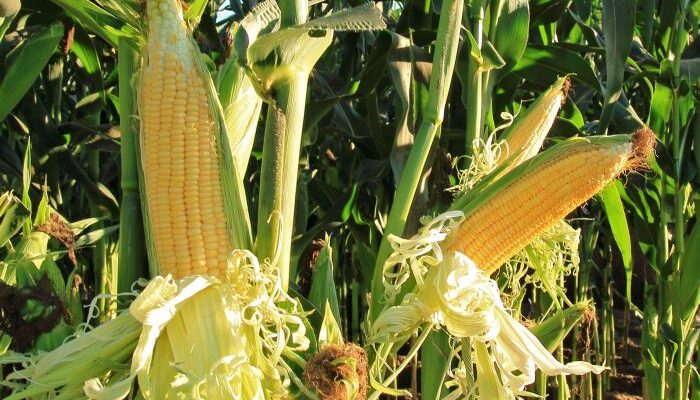Context:
Recently, cereal grains have overtaken sugarcane as the primary feedstock for producing ethanol blending with petrol.
Key Highlights
- In the current supply year (November 2023-October 2024), sugar mills and distilleries supplied 401 crore litres of ethanol to oil marketing companies by June 30.
- Of this total, 211 crore litres (52.7%) were made from maize and damaged food grains, while 190 crore litres came from sugarcane-based feedstocks.
- For the first time, grains now contribute over 50% to India’s ethanol production, increasing from 27.1% in 2022-23, 16.7% in 2021-22, 13.6% in 2020-21, 9.2% in 2019-20, 5% in 2018-19, and zero in 2017-18.
What is Ethanol?
- Ethanol(C2H5OH), also called alcohol, ethyl alcohol, and grain alcohol, is a clear, colourless liquid ingredient in alcoholic beverages like beer, wine, or brandy.
- Ethanol is a natural byproduct of plant fermentation and can be produced through the hydration of ethylene.
- Ethanol, which is 99.9% pure alcohol is suitable for blending with petrol.
Reasons Behind the Increase in Maize for Ethanol Blending
- Initial Production: Till 2017-18, ethanol was produced only from C-heavy molasses, a byproduct that sugar mills could not economically convert into sugar.
- Policy Changes: The EBP program received a boost in 2018-19, when the government allowed ethanol production from B-heavy molasses and whole cane juice/syrup, offering higher prices to compensate for reduced sugar production.
- Multi-Feedstock Distilleries: Companies installed distilleries capable of using both molasses and grains, switching based on seasonal availability. Maize as the Top Ethanol Feedstock
- Government Restrictions: The government stopped supplying FCI rice (July 2023) and restricted cane juice and B-heavy molasses use for ethanol (December 2023).
- Incentive Pricing: The ex-distillery price for maize-based ethanol is Rs 71.86 per liter, higher than other feedstocks.
Ethanol Blending Programme (EBP)

- It aims to reduce dependence on crude oil imports, lower carbon emissions, and enhance farmers’ incomes.
It was launched by the Ministry of Petroleum and Natural Gas in 2003. - Blending Target: Initially, the programme set a 5% ethanol blending target, which was later increased to 10% by 2022.
Currently, govt aims for 20% ethanol blending in petrol by 2025.
Current Blending Ratio: The average blending ratio was 13% till June 2024, up from 12.1% in 2022-23 and 10% in 2021-22.
Impact on Agriculture and Industry
- Positive Impact on Farmers: Increased demand for maize benefits farmers in Karnataka, Madhya Pradesh, Maharashtra, and Bihar. It provides a new market for maize, boosting their income.
- Concerns from Poultry and Feed Industry: The All-India Poultry Breeders Association and Compound Livestock Feed Manufacturers Association raised concerns about maize shortages.
Government Response: The Centre permitted 0.5 million tonnes of maize imports at 15% concessional duty and is considering further imports to address the demand-supply gap.
Why is the government discouraging the use of sugar for ethanol production?
- The government is discouraging the use of sugar for ethanol production due to its high water consumption.
- According to a Mongabay-India report, producing 60-80 tonnes of sugarcane per acre requires an average of nine lakh litres of water twice a month.
- The report also notes that to achieve the 20% ethanol blending target by 2025, India would need 1,320 million tonnes of sugarcane, 19 million hectares of additional land, and 348 billion cubic metres of extra water.
- Similarly, a NITI Aayog report indicates that producing just one litre of ethanol from sugarcane consumes at least 2,860 litres of water.
Way Forward
- The shift to cereal grains as the primary ethanol feedstock highlights the dynamic nature of India’s ethanol production strategy.
- While it presents opportunities for farmers, it also poses challenges for other industries reliant on maize.
- The government must balance these interests by considering controlled imports, incentivizing alternative feedstocks, and promoting sustainable agricultural practices to support both ethanol production and food security.

